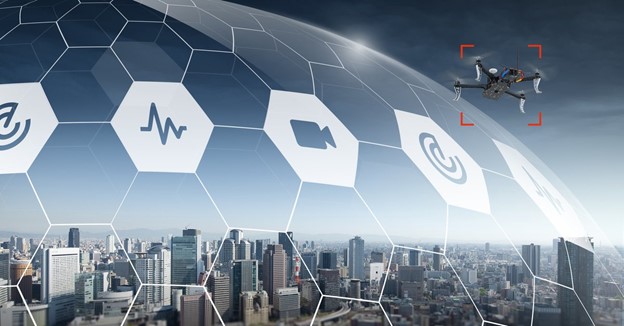By Amit Samani

Across the world, drone regulations are being passed, aimed at supporting the productive use of drones in our society and leading to the inevitable increase in the number of drones in our skies. Airspace security is becoming a wide-scale, cooperative effort, with capabilities like Remote ID being launched globally to monitor cooperative drone activity. By applying smart airspace security intelligence and insights, security teams can identify the compliant drones while exposing unauthorized or hostile drones.
Preparing for & Mitigating Against Drone Threats
How should security teams react when an unauthorized drone enters protected airspace? Key to the success of a smart airspace security program is developing proactive response protocols in the event of a drone incursion.
Before developing airspace security standard operating procedures (SOPs), security teams must first uncover patterns in their drone activity and answer the following questions:
- How many drones are in my airspace?
- What time of day, and on which days, are drones appearing?
- What kinds of drones are being flown?
- What are the most common areas for drone activity?
Using these questions as a guide, security teams can use airspace security intelligence and insights to advance their response protocols before, during, and after a drone incursion.
Before the incursion:
- Practice with your security team: Airspace security programs should begin under ideal, “blue sky” conditions
- Engage local law enforcement: Work with local law enforcement to determine the information they require to approach and apprehend an unauthorized drone pilot
During the incursion:
- Respond to automated alerts: Alarms are triggered as soon as a drone is detected
- Deploy security team to follow drone, and approach or apprehend pilot: By using flightpath information and localization of the drone, security teams can efficiently collect the evidence needed to locate a pilot
- Protect assets with passive countermeasures: This can include lowering blinds, monitoring WiFi networks, leading people away from exposed areas, or halting operations
- Alert local law enforcement: Local law enforcement can deploy additional resources to apprehend drone pilots
After the incursion:
- Build a threat profile: Summaries of drone activity, provide information such as most frequent times and days drones appear and drone hotspots
- Update security procedures: It may be that drones are appearing during shift changes, shipping/receiving, or concurrent with significant events at the site, such as game days or executive meetings
- Post “No-Fly-Zone” signage: Aerial trespassers will think twice with awareness of the risks they take when flying in your airspace
Prevent Losses with Results-Driven, Smart Airspace Security Programs
The consequences of drone incursions can be costly, from operational downtime to physical property damage and even data breach. Installing and launching a smart security program will deliver complete airspace situational awareness. A philosophy of develop, test, and enhance is essential for security teams and must be considered adjacent to the technology investment.
Amit Samani is the Vice President of UK and Americas for Dedrone. Join Amit at GSX Learning Session, “Achieving Complete Airspace Security Amid Loosening Drone Usage Regulations and Emerging Threats” on 29 September at 11:30-12:30 PM ET, located the Offensive Strategies: Preparing for an Attack Theater. Meet the Dedrone team at Booth #2114.
